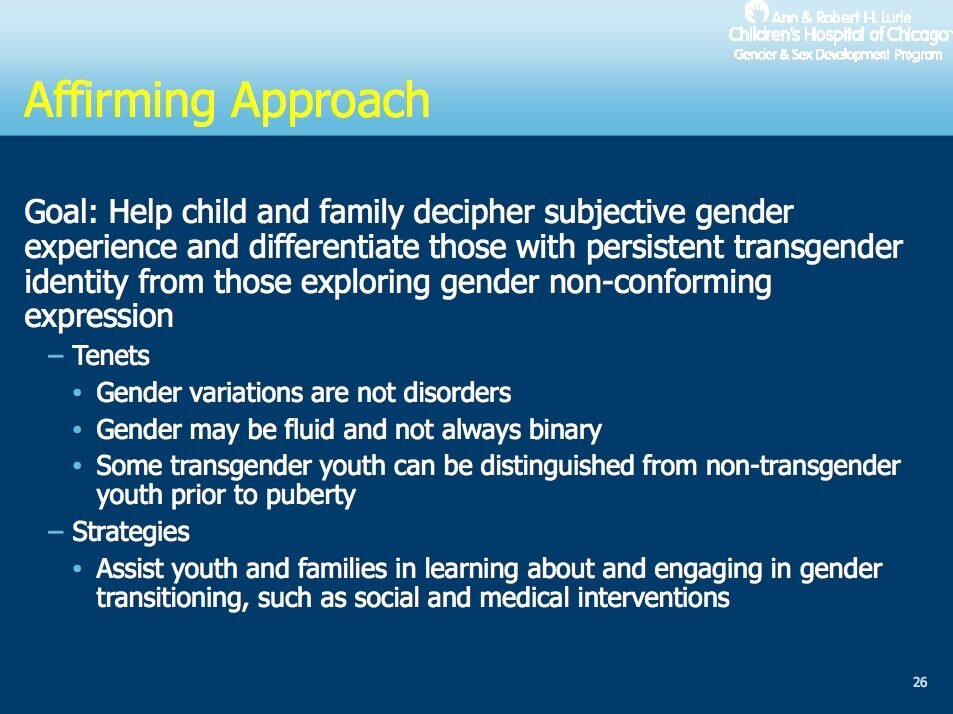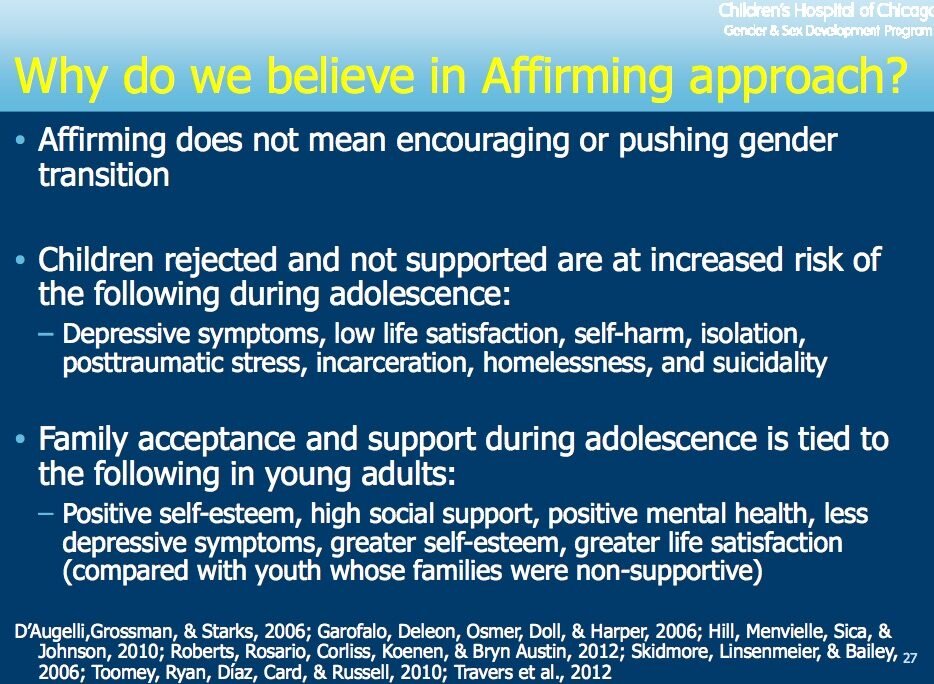The official American Academy of Pediatrics published (link to summary article) 9 clear recommendations for caring for youth and adolescents who identify as transgender or gender-diverse.
I highlight the portions that specify providing health care according to what the youth wants, especially to match the youth’s gender expression. Not parent, guardian, teacher, staff member, administrator, guidance counselor, etc.
[Aside: You may have heard a FoxNews Glenn Beck headline about an anti-gay-marriage hate group calling itself “American Pediatricians” creating a hoax claiming supporting a transgender youth is abuse. Read more about how Snopes debunked this, as well as the American Academy of Pediatrics’ internal presentation recommending affirming a child’s gender expression (pdf). —RXS]
1. that youth who identify as TGD have access to comprehensive, gender-affirming, and developmentally appropriate health care that is provided in a safe and inclusive clinical space;
2. that family-based therapy and support be available to recognize and respond to the emotional and mental health needs of parents, caregivers, and siblings of youth who identify as TGD;
3. that electronic health records, billing systems, patient-centered notification systems, and clinical research be designed to respect the asserted gender identity of each patient while maintaining confidentiality and avoiding duplicate charts;
4. that insurance plans offer coverage for health care that is specific to the needs of youth who identify as TGD, including coverage for medical, psychological, and, when indicated, surgical gender-affirming interventions;
5. that provider education, including medical school, residency, and continuing education, integrate core competencies on the emotional and physical health needs and best practices for the care of youth who identify as TGD and their families;
6. that pediatricians have a role in advocating for, educating, and developing liaison relationships with school districts and other community organizations to promote acceptance and inclusion of all children without fear of harassment, exclusion, or bullying because of gender expression;
7. that pediatricians have a role in advocating for policies and laws that protect youth who identify as TGD from discrimination and violence;
8. that the health care workforce protects diversity by offering equal employment opportunities and workplace protections, regardless of gender identity or expression; and
9. that the medical field and federal government prioritize research that is dedicated to improving the quality of evidence-based care for youth who identify as TGD.
Citation:
Jason Rafferty (2018) Ensuring Comprehensive Care and Support for Transgender and Gender-Diverse Children and Adolescents. Pediatrics Sep 2018, e20182162; DOI: 10.1542/peds.2018-2162 (direct pdf)


